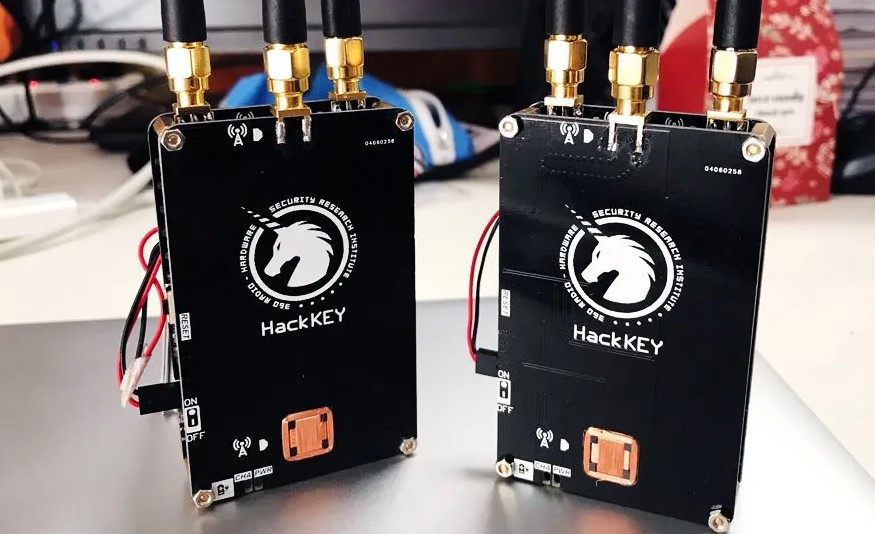In today’s technologically driven world, convenience and efficiency are at the forefront of most innovations, especially when it comes to everyday essentials like car keys. A repeater box for car keys is a prime example of this trend, designed to enhance the convenience of using remote car keys by extending their signal range. This small, yet powerful device captures the signal from your car key fob and retransmits it, allowing you to operate your vehicle from greater distances than typical fobs allow.
In this article, we will explore everything you need to know about repeater boxes for car keys—from what they are and how they work, to the benefits they offer and the risks they pose. We’ll also guide you through choosing the right model, installing it correctly, and adhering to best practices for safe and effective use. Additionally, we will look ahead to the future of car key technology and consider how repeater boxes might evolve. Whether you’re a tech enthusiast, a car owner considering this device, or simply curious about automotive innovations, this comprehensive guide will provide you with valuable insights and practical tips.
What is a Repeater Box for Car Keys?
A repeater box for car keys, often referred to simply as a signal repeater or a range extender, is a device that boosts the signal of a car key fob to increase its operational range. This technology enables car owners to lock, unlock, and even start their vehicles from distances that are typically beyond the reach of standard key fobs.
How it Works: Technical Explanation of Signal Amplification and Transmission
The primary function of a repeater box is to amplify a weak or distant signal from a car key fob. When a car owner presses the button on their key fob, the repeater box intercepts this signal, amplifies it, and then retransmits it at a higher power. This process not only extends the range over which the car can be accessed and controlled but also helps in areas where the signal might be blocked or weakened by obstacles like walls or other electronic interference.
Technically, the repeater box consists of two main components:
- Receiver: This component captures the original signal from the key fob, which operates on specific radio frequencies typically in the 300 MHz to 434 MHz range.
- Transmitter: After amplification, the signal is sent through the transmitter component of the repeater box, which then broadcasts it at a stronger rate, ensuring that the signal reaches the car even from extended distances.
Types of Repeater Boxes Available on the Market
Repeater boxes vary in complexity and functionality. Here are a few common types available on the market:
- Basic Repeater Boxes: These devices simply extend the range of the key fob with minimal setup required. They are ideal for users who just need a bit more range to comfortably access their vehicles from within their homes or workplaces.
- Programmable Repeater Boxes: Offering more sophisticated options, these repeater boxes can be programmed for specific frequencies or additional security features to prevent unauthorized access.
- Smart Repeater Boxes: These are integrated with IoT (Internet of Things) capabilities, allowing them to be controlled via smartphone apps. Such boxes can provide notifications about the car’s status and allow for more customizable control over the car’s various remotely accessible features.
Benefits of Using a Repeater Box
Repeater boxes for car keys offer a variety of advantages that make them an appealing choice for many car owners. From increasing convenience to enhancing accessibility, these devices cater to a range of needs.
Convenience: Enhancing User-Friendliness of Car Keys
One of the primary benefits of using a repeater box is the sheer convenience it brings to everyday life. With this device, you can operate your vehicle from greater distances than the standard range of a car key fob. This means you can start your car, cool it down, or heat it up from inside your home or office, rather than having to go outside to do so. Additionally, it’s useful in large parking lots or when you’ve parked your car far away, as you won’t have to approach the vehicle just to unlock it or start the engine.
Accessibility: Aiding Those with Mobility Issues
For individuals with mobility issues, a repeater box can be a significant aid. By extending the range of the car key fob, it allows those who find it difficult to move quickly or over long distances to manage their vehicle more easily. This can help in reducing physical strain and offering a more comfortable and independent car-using experience. For example, a person with disabilities can start their car and get the air conditioning or heating running before they even leave the house, ensuring they enter a comfortable environment right away.
Use Cases: Ideal Situations and Environments for Repeater Box Usage
The utility of repeater boxes extends across various scenarios and environments:
- Homes with Detached Garages: In homes where the garage is not directly attached to the house, a repeater box can help in managing the vehicle without the need to go near it.
- Large Properties: Owners of large properties can benefit immensely from the extended range, being able to access and control their vehicles from significant distances.
- Harsh Weather Conditions: In extreme weather conditions, such as heavy snow, rain, or heat, the ability to start and prepare your car from a distance can add a layer of safety and comfort.
- Security: In scenarios where it might be unsafe to approach your vehicle, such as at night or in poorly lit parking areas, being able to unlock or start your car from a distance can provide a security advantage.
Risks Associated with Repeater Boxes
While repeater boxes for car keys offer significant benefits, they also come with certain risks that users must be aware of. These risks primarily revolve around security vulnerabilities, legal concerns, and the need for preventive measures.
Security Concerns: Potential Vulnerabilities Introduced by Using a Repeater Box
One of the most pressing concerns with the use of repeater boxes is security. By amplifying and extending the signal of a car key fob, these devices can unintentionally make it easier for unauthorized individuals to intercept the signal. This type of attack, known as a “relay attack,” involves a thief using their own repeater box to extend the signal from a key fob inside a home to unlock and start a car parked outside. Such vulnerabilities can potentially lead to vehicle theft or unauthorized access to a vehicle without the owner’s knowledge.
Legal Implications: Legality of Using Repeater Boxes in Different Regions
The legality of using repeater boxes can vary significantly from one region to another. In some areas, the use of these devices is entirely legal as long as they are used without malicious intent. However, in other regions, any form of signal amplification without explicit permission may be considered illegal, especially if it can interfere with other electronic devices or potentially enable illegal activities like the aforementioned relay attacks. It’s crucial for users to check local regulations and compliance issues before purchasing and using a repeater box.
Preventive Measures: Tips on How to Mitigate Risks Associated with Repeater Boxes
To minimize the risks associated with repeater boxes, users can take several precautionary measures:
- Selective Use: Only activate the repeater box when necessary, rather than leaving it running continuously. This reduces the window of opportunity for any potential relay attacks.
- Security Enhancements: Invest in repeater boxes that come with enhanced security features, such as encrypted signals or the ability to only amplify signals when a secondary authentication (like a password or biometric verification on a smartphone app) is provided.
- Physical Security Measures: Additional physical security measures for the vehicle, such as steering wheel locks or a vehicle immobilizer system, can deter theft even if a relay attack is attempted.
- Awareness and Monitoring: Stay informed about the latest security updates and potential vulnerabilities associated with car key technologies. Regularly monitor your vehicle’s surroundings and consider installing a security camera that covers the area where your car is parked.
How to Choose the Right Repeater Box
Selecting the right repeater box for your car keys involves careful consideration of features, reviews of top models, and an understanding of cost implications. Here’s a guide to help you make an informed decision:
Features to Look for When Purchasing a Repeater Box
When shopping for a repeater box, several key features should be considered to ensure you are getting a device that meets your needs:
- Range Extension Capabilities: Evaluate how much additional range the repeater box offers. A good repeater should comfortably increase the signal range to suit your typical scenarios, such as accessing your car from inside your home or office.
- Security Features: Look for repeater boxes that offer secure transmission to prevent unauthorized access. Features like encrypted signals or those that require additional user verification are preferable.
- Compatibility: Ensure the repeater box is compatible with your vehicle’s make and model, as well as your key fob’s specific frequency.
- Ease of Installation: Consider whether the device is easy to install on your own or if it requires professional assistance. Also, check if the manufacturer provides customer support for installation.
- Energy Efficiency: Since these devices will often be left on for extended periods, finding one that does not consume excessive power is beneficial.
Top-rated Repeater Box Models: Brief Review and Features
While specific model recommendations can vary over time as new products enter the market, here are a few examples of well-regarded repeater box models known for their reliability and performance:
- SignalGuard Repeater Box: Known for its robust security features, including encryption and a self-learning mode that adapts to your car key’s unique frequency. Offers up to 300 meters of additional range.
- AutoRangeX Pro: This model is favored for its high compatibility with various car brands and its impressive range extension. It also features a low-energy consumption design, making it ideal for continuous use.
- SecureKey Amplifier: Offers advanced encryption protocols and is specifically designed to combat relay attacks, making it a great choice for those concerned about security.
Cost Considerations: Budgeting for Different Types and Features
The cost of repeater boxes can vary widely based on features, brand, and security technology. Basic models might start around $50, while more advanced options with extensive security features and greater range capabilities can go up to $200 or more. When budgeting for a repeater box, consider the following:
- Initial Purchase Price: Determine what features you need and find a model that fits your budget without compromising on essential functionalities.
- Installation Costs: Some high-end models might require professional installation, which can add to the overall cost.
- Long-Term Costs: Consider the energy consumption and any subscription fees for associated apps or security services if applicable.
Installation Guide for a Repeater Box
Installing a repeater box for your car keys can be a straightforward process, but it’s important to follow each step carefully to ensure the device functions properly and securely. Here’s a detailed guide on how to install a repeater box, along with tips to avoid common pitfalls and maintain the device for optimal performance.
Step-by-Step Installation Process
- Unbox and Check Contents: Start by carefully unboxing the repeater box and check that all components are included, such as the main unit, power supply, and any necessary cables or mounts.
- Choose an Optimal Location: The location of your repeater box can significantly affect its performance. Place it within a reasonable distance from where your car is usually parked, but also within a good range of where you use your key fob most often (like near the front door if you activate it from inside your house).
- Connect to Power: Plug the repeater box into a power source. Some models may also have battery options, which are useful in case of power outages.
- Pair with Your Key Fob: Follow the manufacturer’s instructions to pair the repeater box with your car key fob. This usually involves holding the key fob near the box and pressing a button on the box to initiate pairing.
- Test the Setup: Once paired, test the repeater box by moving to various locations around your property and using your key fob to lock and unlock your car. Check for any delays or failures in signal transmission.
- Secure the Installation: Secure the repeater box in its location, ensuring that it is not easily visible or accessible from outside to prevent tampering.
Common Installation Pitfalls and How to Avoid Them
- Poor Location Choice: Avoid placing the repeater box too close to metal objects or electronic devices that can interfere with the signal. Also, placing it too far from the car or key fob’s usual location can render it ineffective.
- Improper Pairing: Ensure that the pairing process is completed as per the instructions. Improper pairing can lead to weak performance or security vulnerabilities.
- Ignoring Device Indicators: Most repeater boxes have status indicators (like LEDs) that show power status and signal strength. Ignoring these can lead to missing out on important alerts about the device’s performance.
Maintenance Tips to Ensure Longevity and Efficiency
- Regularly Check Device Functionality: Periodically test the repeater box by using your key fob at various ranges to ensure it is functioning correctly.
- Firmware Updates: Keep the device’s firmware updated. Manufacturers often release updates to improve functionality or patch security vulnerabilities.
- Clean the Device: Keep the repeater box free of dust and debris, which can affect performance. Use a dry cloth to wipe down the device.
- Monitor Battery Levels: If your repeater box has a battery backup, regularly check and replace the batteries as needed to ensure it remains operational during power outages.
Best Practices for Using a Repeater Box Safely and Effectively
To maximize the benefits of a repeater box while minimizing risks, it’s essential to adopt best practices for its safe and effective use. Here are some crucial tips on how to use a repeater box responsibly, maintain it regularly, and respond to potential security breaches.
Tips on Safe Usage to Avoid Unintended Consequences
- Use Selectively: Activate the repeater box only when necessary. Continuous operation can increase the risk of unauthorized access through signal interception. Consider using a repeater box with an on/off switch or programmable timers to control its activity.
- Secure Placement: Install the repeater box in a location that is not visible or easily accessible from outside your property to prevent tampering. Inside placements near the center of the home can reduce the chances of external signal interception.
- Monitor Signal Strength: Be aware of how far your signal is being extended. Excessive range can be a liability as it might allow your car to be accessed from farther away than you anticipate. Adjust the settings accordingly to manage the range effectively.
Regular Maintenance Routines
- System Check-ups: Regularly test the repeater box to ensure it is functioning properly. This includes checking signal strength, battery life (if applicable), and connectivity.
- Firmware Updates: Keep the software of your repeater box up to date. Manufacturers may release security patches or feature upgrades that can enhance performance and security.
- Physical Inspections: Periodically inspect the physical condition of the repeater box and its components for any signs of damage or wear. Ensure that all connections are secure and that the device is clean and free from obstructions.
How to Detect and Respond to Security Breaches
- Stay Informed: Educate yourself about the latest security threats related to repeater boxes and car key technology. Knowing the potential risks can help you stay vigilant.
- Security Alerts: If available, use a repeater box that offers security alerts or has an accompanying smartphone app that notifies you of any unusual activity. This can include unexpected range usage or attempts to pair with unauthorized key fobs.
- Immediate Response: If you suspect that your repeater box has been compromised, immediately disconnect it and reset its settings. Contact the manufacturer for advice on additional steps to secure the device and consult with security professionals if necessary.
- Regular Audits: Conduct regular audits of your vehicle’s and repeater box’s security settings. Review your usage patterns and adjust the security settings to ensure they align with current needs.
Future of Car Key Technology
The landscape of car key technology is continuously evolving, driven by advances in electronics, connectivity, and consumer needs for greater security and convenience. As we look beyond the current technology, such as repeater boxes, the future holds promising innovations that may redefine how we interact with our vehicles.
Innovations in Car Key Technology: What’s Next After Repeater Boxes?
- Smartphone Integration: More manufacturers are moving towards integrating car key functions directly into smartphones, using apps that allow you to lock, unlock, start, and even track your vehicle through your mobile device. This technology leverages encrypted digital keys that can be shared securely over the internet, offering a higher level of convenience and flexibility.
- Biometric Access: Biometric technologies, such as fingerprint and facial recognition, are starting to be implemented as a method to access and start cars. This approach enhances security by ensuring that only authorized users can operate the vehicle, potentially integrating with personalization settings for seat position, mirror adjustments, and climate control preferences.
- Near Field Communication (NFC) and Bluetooth Low Energy (BLE): These technologies provide the ability to unlock and start a car with minimal power consumption and without the need for an internet connection. They can offer a more secure alternative to traditional radio frequency technologies used in key fobs and repeater boxes.
How Repeater Boxes are Adapting to New Automotive Technology Trends
- Enhanced Security Features: As car key technology becomes more sophisticated, repeater boxes are incorporating advanced encryption methods and secure pairing mechanisms to protect against unauthorized access and relay attacks.
- Integration with Vehicle Telematics: Repeater boxes are beginning to integrate more deeply with vehicle telematics systems, allowing not just for remote locking and unlocking, but also for vehicle diagnostics, location tracking, and real-time alerts that can be managed from a smartphone app.
- Energy Efficiency Improvements: With an increasing focus on sustainability, future repeater boxes will likely use energy more efficiently, reducing their environmental impact and making them more suitable for use in electric and hybrid vehicles.
Predictions for Future Usage and Market Evolution
- Decline of Traditional Key Fobs: As digital keys and biometric solutions become more prevalent, the traditional key fob may become obsolete, with manufacturers opting for fully digital solutions integrated with personal devices or biometric recognition systems.
- Market Expansion in Shared and Autonomous Vehicles: With the rise of shared vehicle services and the potential future of autonomous vehicles, car access technologies will need to be more scalable, secure, and capable of handling multiple users seamlessly, which will drive innovation in the car key technology space.
- Regulatory and Security Standards Development: Expect stricter regulations and standards to emerge around digital car keys and related technologies, focusing on improving security measures to protect against hacking and unauthorized access.
Conclusion
Repeater boxes for car keys have introduced a new level of convenience and accessibility for vehicle owners, enabling the operation of cars from extended distances. These devices amplify the signal from a car key fob, allowing users to unlock, lock, or start their vehicles without needing to be in close proximity. This technology proves especially beneficial for individuals with mobility issues or for those who often need to access their vehicles from significant distances, such as from inside buildings or on large properties.
However, while repeater boxes offer enhanced usability, they also come with their own set of risks, primarily concerning security. The potential for relay attacks, where unauthorized individuals could intercept and use the extended signal to gain access to your car, is a significant concern. Additionally, the legal landscape around the use of such devices can vary, with some regions having strict regulations regarding signal amplification.
As technology continues to evolve, newer solutions like smartphone-integrated digital keys and biometric systems are beginning to address some of these security issues while providing even greater convenience and customization. These advancements suggest a future where traditional key fobs and possibly even repeater boxes may become obsolete.
Before deciding to purchase a repeater box, it is crucial for consumers to weigh these factors carefully. Consider the specific benefits a repeater box can offer based on your personal or professional needs, and balance them against the potential security risks and legal considerations. It is also advisable to stay informed about ongoing technological advancements and security standards in car key technology to make a well-rounded decision.






